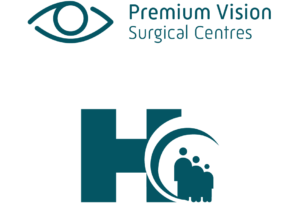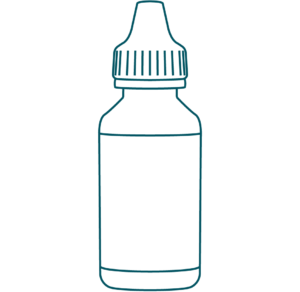Cataracts
Over a person’s lifetime, the natural lens in the eye begins to become cloudy which can make it difficult to see clearly. This is called a cataract and typically occurs with age, being more common in the elderly. Cataracts can occur in one (unilateral) or both eyes (bilateral) and, if left without treatment, can cause blindness.
How Does It Form?
Your eye lens sits directly behind your pupil and it works like a camera lens, focusing light at the back of your eye where the light-sensitive tissue is (also called the retina). The light is turned into electric signals which are sent through nerves to the brain which interprets it as an image.
Unlike a camera’s glass lens however, your eye lens is made of proteins and water. With age, these proteins clump together forming a cataract and can get worse over time. Protein clumps affect the ability of the lens to pass light onto the retina properly which is why people with cataracts have poor vision.

Types of Cataracts
Age-Related
Most cataracts occur as a result of normal aging. There are 3 types of age-related cataracts and differ depending on how and where they develop in the lens:
- Nuclear sclerosis cataracts are the most common type and form in the middle of the lens causing the centre of the lens (the nucleus) to turn yellow or brown.
- Cortical cataracts form around the edges of the centre of the lens and look like wedges pointing inwards.
- Posterior subcapsular cataracts form quicker than the others and are focused at back of the lens.
Non Age-Related
Although age is the most common cause of cataracts, research has shown that they’ve also been linked to diabetes, alcohol abuse, high blood pressure, and smoking. Cataracts can be caused by non age-related reasons such as:
- Secondary cataracts develop after eye problems like glaucoma or after eye surgery or from other health issues like diabetes.
- Congenital cataracts occur from birth or develop during childhood, often appearing in both eyes.
- Traumatic cataracts develop after a blunt force injury to the eye(s).
- Radiation cataracts develop after radiation exposure and can increase with increased exposure and intensity.
Stages of a Cataract
Age-related cataracts go through different stages as they get larger. They progress differently depending on the type of cataracts you’ve been diagnosed with. The four stages of cataracts are:
Stage 1: Early cataract
The lens is still clear but you might not be able to change focus between near and far vision as easily. You might also start to experience slightly blurry/cloudy vision or glare from lights might begin to bother you.
Stage 2: Immature cataract
The proteins have begun to cloud the lens (partially opaque) but there’s still some transparent protein.
Stage 3: Mature cataract
All of the lens protein is completely opaque and can appear milky and white or yellow/brown. At this point it has a considerable effect on your vision and quality of life.
Stage 4: Hypermature Cataract
The cataract has become dense and hard causing extremely impaired vision. These are more difficult to remove but if left untreated can cause complete loss of vision, so it’s important to contact us as soon as you begin to experience symptoms!

Diagnosis
Depending on the type of cataract, different signs and symptoms may develop but generally people with cataracts commonly experience:
- Blurry or cloudy vision (causing difficulty reading, driving, recognizing faces etc.)
- Faded colors
- Seeing a halo effect around lights
- Glare from bright lights
- Poor night vision
- Double vision in affected eye(s)
However, these symptoms aren’t necessarily indicative of cataracts and can be caused by other eye issues so if you’re experiencing abnormal vision, a thorough consultation and examination at PVSC will allow Dr. Youssef to evaluate you for an accurate diagnosis and treatment plan.
How to Prepare for Your Appointment
Please bring your health card, any eye drops you use, a list of current medications, and your eyeglasses and sunglasses. You’ll be asked for them upon arrival.
Arrange for a driver. You won’t be able to drive the day of your appointment because the dilating drops will give you hazy/blurry vision for a few hours.
Bring a friend or family member if you’d like! Although it’s not a requirement, bringing someone you trust with you is a good idea because we’ll discuss a lot of information so extra support is always nice.
Please be aware that some of these tests are covered by OHIP but some are not. You’ll be informed of the cost of any testing that you would need before it is done and you have the right to accept or refuse these test that involve extra cost. Insurance companies and ODSP/Ontario Works cover some of these tests.
What to Expect
When you visit PVSC, there are tests and examinations we perform for any cataract assessment. A typical cataract assessment appointment usually lasts about 2 hours because we conduct all tests and examination during your appointment to save you a tedious second trip to the clinic. These tests are important because they efficiently and accurately give us a comprehensive overview of your eye health.
During your assessment, a technician will sit with you to take your medical history and address your visual symptoms and concerns. Then they will perform the following tests:
Tonometry
We will measure the pressure inside your eye.
Dilated eye exam
Your pupils will be dilated (widened) by medicated drops on your eye. This allows us to look inside your eye through a magnifying glass to detect signs of damage or other eye issues.
Visual acuity test
This is an eye chart test to determine your ability to see clearly at different distances.
After these tests are complete, you will see Dr. Youssef who will perform a thorough examination of your eyes. Based on your test results and examination, he will be able to accurately diagnose the cause of your abnormal vision.
Treatment
Cataract treatment depends on the severity and progression of the cataracts as well as your functional/visual needs and other risk factors. Dr. Youssef will discuss your options with you and help determine your treatment plan.
Early or immature cataracts take several years to progress so they can be treated with new glasses, anti-glare lenses and increased attention to light.
Mature or hypermature cataracts (stage 3 and 4) can be treated by cataract surgery – removing the cloudy lens and replacing it with an artificial lens.
Cataract Surgery
If cataract surgery is recommended, you will need to make some important decisions about your surgery, such as:
- Lens replacement options
- Post-surgery eye drop regimen
- Surgery location
You won’t be required to make these decisions on the spot, of course. Dr. Youssef will outline your options and discuss what is best for you and your lifestyle. You’ll be provided with educational material to do your own research at home and discuss with your family and friends.
We’ve given you an overview of your cataract surgery options below but to help you make you make more informed decisions, click here for more information about your options.

Lens Replacement Options
When the cloudy lens is removed from your eye, it gets replaced with a new, clear artificial lens to restore your vision called an intraocular lens (IOL). Your eyes will be measured before surgery for the artificial lens which will be implanted during surgery, of which there are many options and will differ depending on your budget and lifestyle. While some lens options are covered by OHIP, other more premium options are not. Each IOL has pros and cons so make sure you research your options and discuss them with Dr. Youssef who can help you decide which one’s right for you.
Click here for a detailed look at your lens replacement options.

Surgery Location
You have the choice to undergo your surgery at either Premium Vision Surgical Centre (PVSC) or the Cornwall Community Hospital (CCH). PVSC is a private facility, known for its significantly shorter wait times compared to the hospital.

Eye Drops After Surgery
After cataract and RLE surgery, patients are prescribed 3-4 different eye drops for up to 5 weeks to control inflammation and infection after surgery. For some patients, this is a tedious and costly routine to follow. Depending on coverage, it might cost up to $150 per eye for patients under 65. Patients 65 and over can have their drops covered by Medicare (apart from the filling fees or copay).
To ease the financial burden on patients as well as the mental load of having to use the drops consistently, at PVSC we offer a new option – dropless surgery! Dropless involves injecting medication (a compound mixture of steroid triamcinolone and a 4th generation quinolone antibiotics, gatifloxacin) and moxifloxacin during the surgery. This way, patients are free from the tedious eye drop regimen and will only need to use drops if the eyes feel dry. The dropless option is especially beneficial for patients with arthritis or who have difficulty administering drops.
Known side effects of this method includes possible rise of eye pressure which might need treatment. A small number of patients may have some inflammation that requires eye drops to be started. It’s very important to avoid rubbing the eyes after surgery as rubbing your eyes can open the wound and introduce bacteria which can lead to serious infection inside the eye and can be blinding if not treated.
In an effort to address compliance and convenience, our patients are able to choose the post-surgery regimen that works best for their lifestyle. At PVSC, we offer:
Standard drops
Use the Medicare covered drops if you are 65+. Tobradex and Acuvail. Two drops for 2 weeks and one drop for 5 weeks total. This option is okay with some precautions.
Possible side effects are increased eye pressure with Tobradex due to the strong steroids, and eye burning sensation after using Acuvail (which lasts about a minute).
The penetration of the Tobramycin antibiotic into the inside of the eye is not as good as the penetration of the 4th generation quinolone antibiotics like in the dropless option.
Dropless
This approach is highly convenient and effective, and we strongly recommend it! During the procedure, moxifloxacin is injected inside the eye to prevent infection, while triamcinolone and moxifloxacin are injected outside the eye, under the conjunctiva, for additional protection and to reduce inflammation. This method ensures a comprehensive treatment, targeting different areas of the eye for optimal results.
